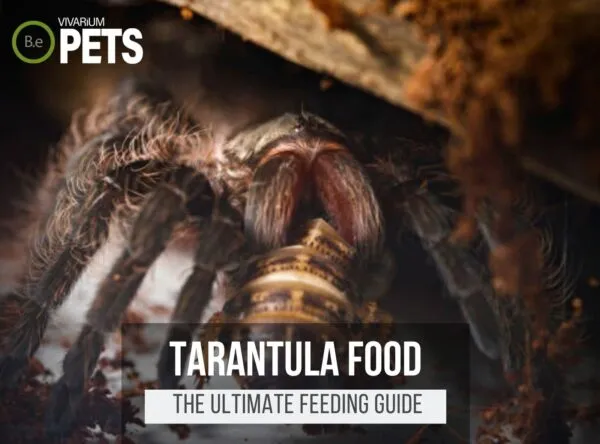What is the Natural Tarantula Diet?
Understanding a tarantula’s diet in the wild is crucial for anyone interested in these fascinating creatures, whether for observation or captive care. The natural diet of a tarantula is a complex interplay of opportunistic hunting and environmental factors. Tarantulas are primarily insectivores, meaning their diet consists mainly of insects. However, the specific types of insects and other prey they consume vary greatly depending on the tarantula species, the environment they inhabit, and the season. This article will explore the intricacies of what tarantulas eat in their natural habitats, providing insights into their feeding habits, nutritional needs, and how to replicate these conditions in a captive setting.
Understanding Tarantula Diet in the Wild
In the wild, tarantulas are ambush predators, meaning they wait for prey to come within striking distance. They are not active hunters that chase down their food. This lifestyle significantly influences their dietary choices. Tarantulas are opportunistic feeders, meaning they will eat whatever is available and within their capabilities to capture. The diet of a tarantula is heavily influenced by geographical location and the specific habitat in which it lives. For instance, tarantulas in tropical rainforests will have access to a wider variety of prey compared to those in more arid environments. The availability of food sources varies throughout the year, which impacts the tarantula’s feeding patterns and overall health.
Key Prey of Tarantulas in the Wild
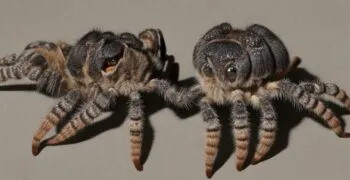
The primary food source for tarantulas in the wild is insects. They are voracious eaters and consume a wide range of insect species. Common prey includes crickets, grasshoppers, beetles, and various types of caterpillars. The specific insects consumed depend on what is most readily available in their environment. For larger tarantula species, the diet can extend beyond insects to include small vertebrates. This can include small lizards, snakes, and even small birds, although these are less common. Tarantulas are also known to eat other invertebrates, such as smaller spiders and sometimes even scorpions, if the opportunity arises. The diet of a tarantula is determined by the size of the tarantula and its habitat.
Insects as a Staple in Tarantula Diets
Insects form the backbone of a tarantula’s diet, providing essential nutrients for growth, development, and survival. The exoskeleton of insects provides chitin, which is a crucial component for the tarantula’s exoskeleton. Insects also offer a good source of protein, which is vital for muscle development and overall health. The specific nutritional value of insects varies depending on the species, but they generally provide a balanced diet suitable for tarantulas. The abundance and diversity of insects in the tarantula’s habitat greatly influence its health and well-being. A tarantula with a diverse diet of insects is likely to be healthier than one that has limited access to food.
Types of Insects Tarantulas Consume
Tarantulas are not picky eaters when it comes to insects. They will readily consume various types of insects they encounter. Crickets are a popular choice, as they are relatively easy to catch and provide a good source of nutrients. Grasshoppers are another common prey item, especially in areas where they are abundant. Beetles, including various ground beetles and other species, are also frequently consumed. Caterpillars, though less common, can also be part of a tarantula’s diet, especially if they are readily available. The variety of insects in a tarantula’s diet reflects the diversity of its habitat and the opportunistic nature of its feeding habits. This also ensures a balanced intake of nutrients.
Benefits of Insects for Tarantulas
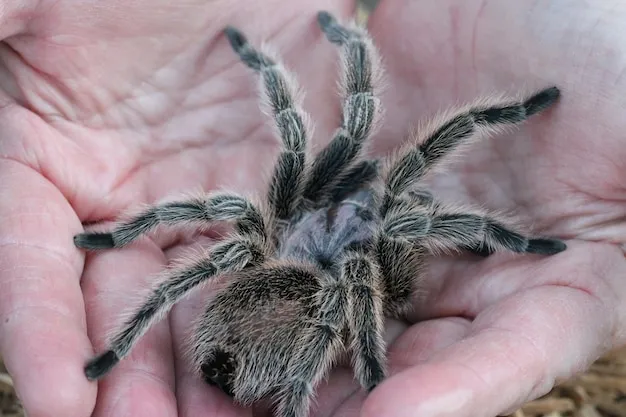
Insects offer several benefits to tarantulas, making them the ideal food source. They are a good source of protein, essential for muscle development and growth. Insects also provide essential vitamins and minerals crucial for overall health. The chitin found in insect exoskeletons supports the tarantula’s own exoskeleton, aiding in molting. Furthermore, insects are relatively easy for tarantulas to catch and digest. The variety of insects in their diet ensures a balanced intake of nutrients. The size and type of insects also determine the ease of capture and digestion, affecting the tarantula’s feeding habits.
Other Invertebrates as Food Sources
While insects are the primary food source, tarantulas will also consume other invertebrates when available. This can include other spiders, such as smaller tarantulas or other species of arachnids. Scorpions, if present in the habitat, can also become prey, particularly for larger tarantula species. The consumption of other invertebrates adds diversity to the diet and provides a broader range of nutrients. It is important to note that the consumption of other invertebrates depends on the size and predatory capabilities of the tarantula, as well as the availability of these alternative food sources in its environment.
Considering Vertebrates in Tarantula Diets
Larger tarantula species may occasionally prey on small vertebrates. This can include small lizards, snakes, and even small birds that venture too close to the tarantula’s burrow. These vertebrates are a less common part of the diet, but they provide additional protein and nutrients. The ability of a tarantula to capture and consume vertebrates depends on its size, strength, and the availability of such prey in its habitat. This dietary aspect highlights the adaptable nature of tarantulas and their ability to exploit different food sources based on their environmental conditions.
Factors Influencing Diet in the Wild
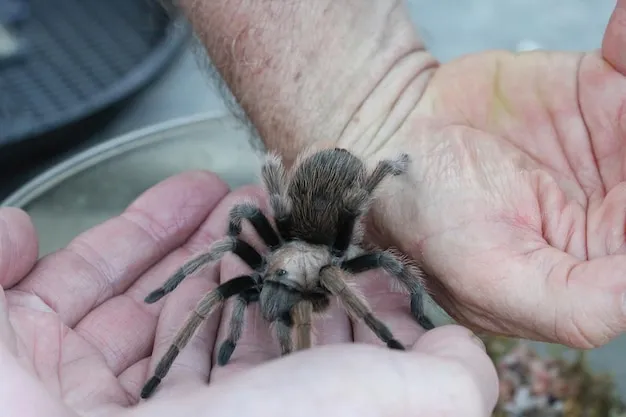
Several factors influence a tarantula’s diet in the wild, including environmental conditions, seasonal changes, and habitat. Environmental factors such as temperature and humidity affect the availability of prey. Warmer temperatures often lead to increased insect activity, providing more food sources for tarantulas. Seasonal variations greatly impact prey availability. During certain times of the year, specific insect populations may boom, providing abundant food for tarantulas. Habitat also plays a crucial role. Tarantulas living in diverse habitats will have access to a wider variety of prey compared to those in less varied environments. The tarantula’s diet, therefore, is a dynamic reflection of its surroundings.
Environmental Impact on Food Availability
The environment significantly impacts the availability of food for tarantulas. Changes in weather patterns, such as droughts or floods, can drastically affect insect populations. Extreme weather can reduce the number of insects available, forcing tarantulas to search for food more extensively or go without it for extended periods. The health of the ecosystem also plays a crucial role. Areas with high biodiversity generally support a greater variety and abundance of insects, thereby providing more food for tarantulas. Pollution and habitat destruction can also diminish insect populations and impact a tarantula’s diet, highlighting the importance of environmental conservation.
Seasonal Variations in Prey
Seasonal changes bring about significant variations in prey availability. In spring and summer, insect populations typically thrive, offering abundant food for tarantulas. During these seasons, tarantulas may feed more frequently and actively. As autumn approaches, insect activity decreases, and tarantulas may need to consume more food to store energy for the colder months. In winter, prey becomes scarce in many regions, leading tarantulas to feed less frequently. The tarantula’s feeding habits are closely linked to the seasonal cycle, ensuring they can adapt and survive the varying environmental conditions.
How Does Diet Affect Tarantula Health?
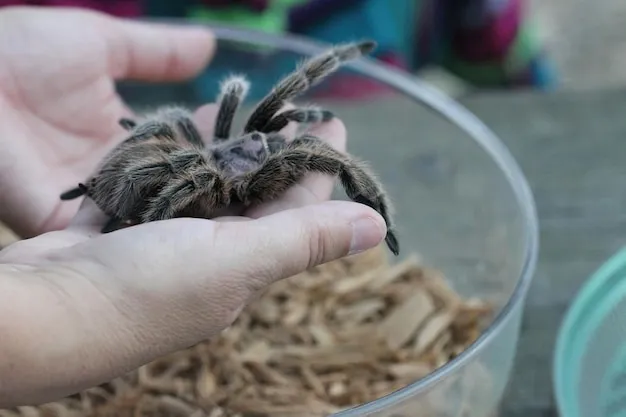
A tarantula’s diet profoundly impacts its overall health and well-being. A diet rich in a variety of insects provides essential nutrients, ensuring proper growth and development. A balanced diet supports the immune system, making the tarantula more resistant to diseases. Insufficient or unbalanced diets can lead to health issues such as stunted growth, molting problems, and weakened immune responses. The health of a tarantula is also reflected in its activity levels, appearance, and longevity. Therefore, providing a diverse and appropriate diet is critical for the long-term health and survival of tarantulas in the wild or captivity.
Nutrition and Growth in Wild Tarantulas
Nutrition is fundamental to the growth and development of wild tarantulas. Adequate protein intake supports muscle growth, while other nutrients contribute to overall health and energy levels. The nutritional value of prey directly affects the tarantula’s growth rate, size, and reproductive success. Young tarantulas require more frequent feeding due to their rapid growth phase, while adults have slower metabolic rates and feed less often. The diet also influences the tarantula’s ability to successfully molt, shedding its exoskeleton and growing larger. Nutrition therefore plays a key role in all stages of a tarantula’s life, from juvenile to adult.
Diet-Related Health Issues to Watch For
Poor diet can lead to various health problems in tarantulas. Nutritional deficiencies can result in stunted growth, weakened immune systems, and difficulties during molting. Overfeeding can lead to obesity, potentially reducing the tarantula’s lifespan and causing mobility issues. Inadequate hydration, often related to a poor diet, can cause dehydration and other health problems. It is crucial to observe the tarantula’s feeding behavior and overall health, adjusting the diet as needed to address any health concerns. Regular monitoring can help prevent and manage diet-related health issues, ensuring the tarantula’s well-being.
Adapting Wild Diet to Captive Settings
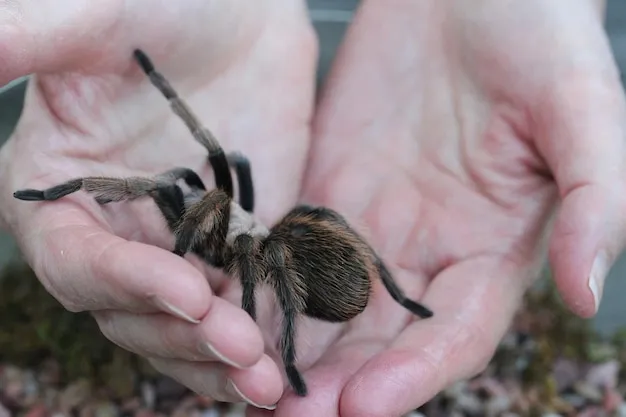
Replicating a tarantula’s wild diet in captivity is vital for its health and longevity. Captive tarantulas should be fed a variety of insects, similar to those found in their natural habitat. This ensures that the tarantula receives a balanced intake of nutrients. The size of the prey should be appropriate for the tarantula’s size. For juveniles, smaller insects are preferred, while adults can consume larger prey. Water should always be available, as hydration is crucial for tarantula health. Regularly monitoring the tarantula’s feeding habits and overall health helps to adjust the diet as needed, ensuring the animal thrives in a captive environment.
Replicating Natural Diet
To replicate a natural diet in captivity, pet owners should offer a variety of insects. Crickets, mealworms, and roaches are common choices, providing different nutritional profiles. It is also beneficial to occasionally offer other insects, such as grasshoppers or moths, to provide additional variety. The insects should be gut-loaded, meaning they are fed a nutritious diet before being offered to the tarantula. This practice enhances the nutritional value of the prey. It is crucial to ensure that all insects are free from pesticides or other harmful substances. Replicating the natural diet involves providing a diverse and healthy food source, helping the tarantula to thrive.
Supplements and Enrichment Considerations
While a varied diet of insects generally provides the necessary nutrients, supplements can be considered in some cases. Calcium and vitamin supplements can be beneficial, especially for growing tarantulas or during molting. However, supplements should be used cautiously and in consultation with a veterinarian or experienced tarantula keeper. Enrichment can enhance the tarantula’s environment. Providing a varied habitat, with different textures and hiding places, can stimulate the tarantula’s natural behaviors. Enrichment helps to promote physical and psychological health, contributing to the overall well-being of the captive tarantula. These factors help ensure the tarantula remains active and healthy.
Top 7 Secrets to a Healthy Tarantula Diet

Providing a healthy diet for a tarantula involves several key considerations. Here are seven secrets to ensure a thriving tarantula.
Secret 1 Offer Variety
Offer a diverse range of insects. Do not rely on only one type of prey. Including crickets, mealworms, roaches, and other insects will provide a broader spectrum of nutrients. This diversity mimics the natural diet and ensures that the tarantula receives all the essential vitamins and minerals needed for optimal health. Switching up the prey also keeps the tarantula stimulated and prevents boredom. Variety is one of the most important aspects of a healthy tarantula diet.
Secret 2 Ensure Freshness
Always provide fresh prey. Ensure insects are healthy and well-fed before offering them to your tarantula. Gut-load the insects by feeding them nutritious food, such as fruits, vegetables, and insect-specific diets. This improves the nutritional value of the prey. Remove uneaten food within 24 hours to prevent mold and bacteria growth. Regularly clean the enclosure to maintain hygiene and prevent any health risks. Fresh and clean food contributes significantly to the overall well-being of your tarantula.
Secret 3 Adjust to Size
Adjust the size of the prey to the size of your tarantula. Provide appropriately sized insects that are easily manageable for the tarantula to catch and consume. Avoid offering prey that is too large, as it can stress the tarantula or lead to digestive issues. Young tarantulas require smaller insects, like pinhead crickets or small mealworms. Adult tarantulas can handle larger prey, such as adult crickets or roaches. Matching the prey size to the tarantula’s size is essential for healthy feeding habits.
Secret 4 Consider Seasonality
Mimic the seasonal variations in prey availability when possible. During warmer months, insects are more abundant; therefore, you may offer more frequent feedings. In colder months, tarantulas may eat less. Adjust the feeding frequency based on your tarantula’s behavior and appetite. Observe your tarantula’s eating habits and adjust the feeding schedule accordingly. Mimicking the seasonal patterns can improve your tarantula’s overall health.
Secret 5 Watch for Waste
Monitor the enclosure for uneaten food and waste. Remove any leftover insects or their remains within a day of feeding. This practice prevents the growth of mold and bacteria. Clean the enclosure regularly to maintain a healthy environment. Use appropriate substrate that is easy to clean and maintain. By removing waste, you promote a hygienic environment that supports your tarantula’s health and well-being.
Secret 6 Observe Feeding Habits
Observe your tarantula’s feeding habits and adjust your approach accordingly. Some tarantulas are more active feeders than others. Pay attention to how often your tarantula eats, the quantity of food consumed, and its overall behavior. If your tarantula refuses to eat, there might be several reasons, such as being in premolt, environmental stress, or a change in the type of food. Adjust the diet, feeding frequency, or the environment as needed. Regular observation helps ensure that the tarantula gets adequate nutrition.
Secret 7 Supplement Wisely
Consider using supplements cautiously. While a varied diet of gut-loaded insects provides most necessary nutrients, some tarantula keepers supplement their pets’ diets with calcium and vitamins. However, supplements should only be given after consulting with a veterinarian or an experienced tarantula keeper. Over-supplementation can be harmful, so always follow recommended dosages. Focus on providing a balanced and varied diet, and use supplements only when necessary, contributing to your tarantula’s optimal health.
In conclusion, understanding the wild tarantula diet is key to providing proper care in captivity. Mimicking their natural feeding habits through a diverse diet, ensuring freshness, adjusting food size, and monitoring health are crucial. By following these seven secrets, you can ensure your tarantula thrives, maintaining its health and allowing you to enjoy its fascinating behavior for years to come.
